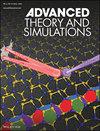Machine Learning-Based Optimization and Performance Enhancement of CH3NH3SnBr3 Perovskite Solar Cells with Different Charge Transport Materials Using SCAPS-1D and wxAMPS
IF 2.9
4区 工程技术
Q1 MULTIDISCIPLINARY SCIENCES
引用次数: 0
Abstract
Recent research focuses on enhancing the sustainability of perovskite solar cells (PSCs) by substituting lead with non-toxic materials, identifying tin-based perovskites such as CH3NH3SnBr3 as a viable alternative. This study examines the efficacy of CH3NH3SnBr3 as the absorber layer in conjunction with V2O5 as the hole transport layer (HTL) and several electron transport layers (ETLs), including C60, IGZO, WS2, and ZnSe. The study employs SCAPS-1D simulations to optimize parameters including doping concentration, thickness, and defect density, aiming to improve photovoltaic efficiency. The optimal configuration (FTO/WS2/CH3NH3SnBr3/V2O5/Au) attained a power conversion efficiency (PCE) of 33.54%, surpassing alternative ETL combinations. The results of the SCAPS-1D simulation are analyzed in comparison to those of the wxAMPS simulation. The machine learning model is developed to predict solar cell performance, achieving an accuracy of 82%. The findings underscore the significance of choosing appropriate ETL to enhance PSC efficiency and sustainability.

基于SCAPS-1D和wxAMPS的不同电荷输运材料CH3NH3SnBr3钙钛矿太阳能电池的机器学习优化和性能增强
最近的研究重点是通过用无毒材料替代铅来提高钙钛矿太阳能电池(PSCs)的可持续性,并确定锡基钙钛矿(如CH3NH3SnBr3)是一种可行的替代品。本研究考察了CH3NH3SnBr3作为吸收层,V2O5作为空穴传输层(HTL)和几种电子传输层(etl),包括C60、IGZO、WS2和ZnSe的效果。本研究采用SCAPS-1D模拟优化掺杂浓度、厚度、缺陷密度等参数,旨在提高光伏效率。最佳结构(FTO/WS2/CH3NH3SnBr3/V2O5/Au)的功率转换效率(PCE)达到33.54%,优于其他ETL组合。将SCAPS-1D仿真结果与wxAMPS仿真结果进行了对比分析。该机器学习模型用于预测太阳能电池的性能,准确率达到82%。研究结果强调了选择适当的ETL对提高PSC效率和可持续性的重要性。
本文章由计算机程序翻译,如有差异,请以英文原文为准。
求助全文
约1分钟内获得全文
求助全文
来源期刊

Advanced Theory and Simulations
Multidisciplinary-Multidisciplinary
CiteScore
5.50
自引率
3.00%
发文量
221
期刊介绍:
Advanced Theory and Simulations is an interdisciplinary, international, English-language journal that publishes high-quality scientific results focusing on the development and application of theoretical methods, modeling and simulation approaches in all natural science and medicine areas, including:
materials, chemistry, condensed matter physics
engineering, energy
life science, biology, medicine
atmospheric/environmental science, climate science
planetary science, astronomy, cosmology
method development, numerical methods, statistics
 求助内容:
求助内容: 应助结果提醒方式:
应助结果提醒方式:


